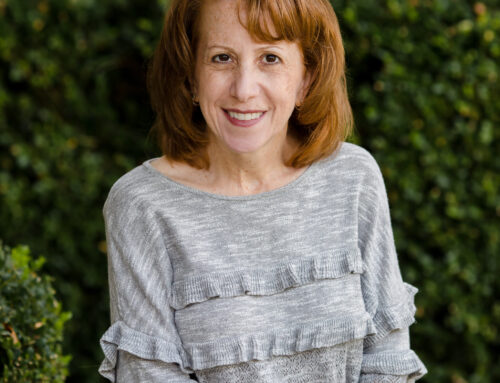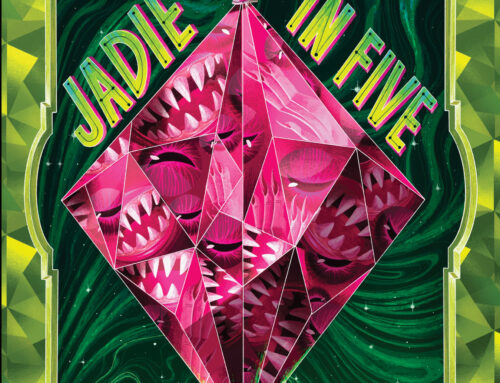A few months ago, I was lucky enough to get a copy of New Kid by Jerry Craft. Before I had a chance to read it, my 11 year-old grabbed it and finished it quickly. He insisted I put the book at the top of my list and it didn’t disappoint. Craft does a great job balancing humor and deeper emotions while telling a very relateable story. The greatest thing is that Jerry agreed to an interview.
Middle Grade Mafia: Before you wrote graphic novels, you developed the comic strip Mama’s Boyz. How does your approach differ between these two story telling mediums?
Jerry Craft: The biggest difference is that Mama’s Boyz was a weekly strip so I didn’t do too many stories. Most were just self-contained comics where the goal in the last panel was to make my readers laugh. Mainly because a five-part story, which would only take a week to tell in a daily newspaper (Monday through Friday), would take five weeks for me to complete. So the only time I really did stories was in my book collections. Also each comic strip ended in a joke, whereas now I include jokes as part of my overall story arc. But that training is what went into making New Kid consistently funny.
MGM: Writers usually fall in the camp of plotter or pantser. What is your writing process?
JC: I saw the term “Plantser” used once, and that’s what best describes me. For New Kid, which is so much larger than anything else I’ve ever done, I found that what worked best for me was to combine the two camps. I start by literally drawing an arc on paper. Then I start putting in notes such as what happens in the beginning, what the big action is, and how everything ends. I also add a few important “key frames,” that I have to make sure to include. But once that’s done, I get my airline ticket and start flying by the seat of my pants. That’s when I come up with some of the more off-the-wall aspects of the book.
There is also a great book called “You Can Do a Graphic Novel,” by Barbara Slate that gave me some great plotting advice and tips for making sure that all of my important characters get a chance to shine.
MGM: What’s the best piece of advice you have received regarding writing?
JC: The best piece of advice I ever got was from a friend of mine who read an early manuscript of one of my middle grade novels, “don’t tell it, show it.” That was a big aha moment for me. And when I did New Kid, I used a slightly altered version which was, “If I show it (in my drawing), then I don’t HAVE to tell it.” For example, if I have Jordan Banks really enjoying a glass of water, I would rather show him smiling, or licking his lips, or having a giant heart over his head. That way, instead of saying something like, “Wow, this water is really good,” I can have him say something that will help to advance the story. The art and the words should not be redundant, they should be complementary.
MGM: When using both written word and visual art to tell a story, how does the editing process work?
JC: Ideally, I like to submit thumbnails (word balloons included) of the entire book. So the first stage of editing is to get the story arc and all the supporting beams in place. Once that’s done, each stage of editing gets smaller and smaller. The final edits are more about proofreading and making sure the art is consistent throughout. I have to say that Andrew Eliopulos, my editor at HarperCollins, really gave me the freedom to tell the story that I wanted to tell. I had heard many horror stories from peers over the years who were forced to make major changes to their scripts, so I have to admit that I was extremely nervous. I kept waiting for some major suggestion that would suck the life out of my story. And much to my surprise, and pleasure, it never came!
MGM: In NEW KID, you do a wonderful job balancing humor with the deeper emotional aspects of your main character Jordan. What message do you hope Jordan passes on to the kids reading your story?
JC: In my ideal scenario, Jordan would not only pass on a message to kids, but to teachers, librarians and parents as well. And that message is when you see kids of color, make sure you see them as kids first. Because they are! They like to laugh, and play, and use their imaginations, but to me they are constantly bombarded with so many things that force them to grow up at a much faster rate than other kids. Their books. Their movies. Their music. Everything is such a heavy reminder of how terrible their lives are going to be. Even when that is not the situation that they’re in. Let them keep their magic. They have the rest of their lives to be grown.
MGM: What was your middle school experience like? How much Jerry is there in Jordan?
JC: New Kid is a story fueled by decades of research, first as me being a kid going to a private school, then years later as a father of two private-school sons. So all of the subtleties and nuances that I touch on are from my real-life experience.
The whole “wanting to go to art school but getting forced to go to a predominately white private school” is my life. But for me, it was just high school (grades 9-12). Before that, I went to smaller private schools that were probably 96% African American.
My sons, on the other hand, have always gone to PWIs. So in many aspects, it was easier for them because they began at the starting line. Plus they had two parents who watched closely and gave them an idea of what to expect as they got older.
My parents just pushed me into a freezing cold pool and just figured sooner or later I’d learn how to swim. J
MGM: Please share a fun picture and the story that goes with it.
This is a picture of Jordan Banks in front of the Washington Heights’ apartment where we both grew up. One of them, and I’m not saying which, is where I was born and lived all the way through college. So when it can time to give Jordan a home, I couldn’t think of a better place than my old Brownstone!!!
Don’t miss out on great content from the Mafia! Have agency news, author interviews, book reviews, etc. delivered straight from your In-Box by entering your email address in the Subscribe Form at the top/right of the page.








Leave A Comment